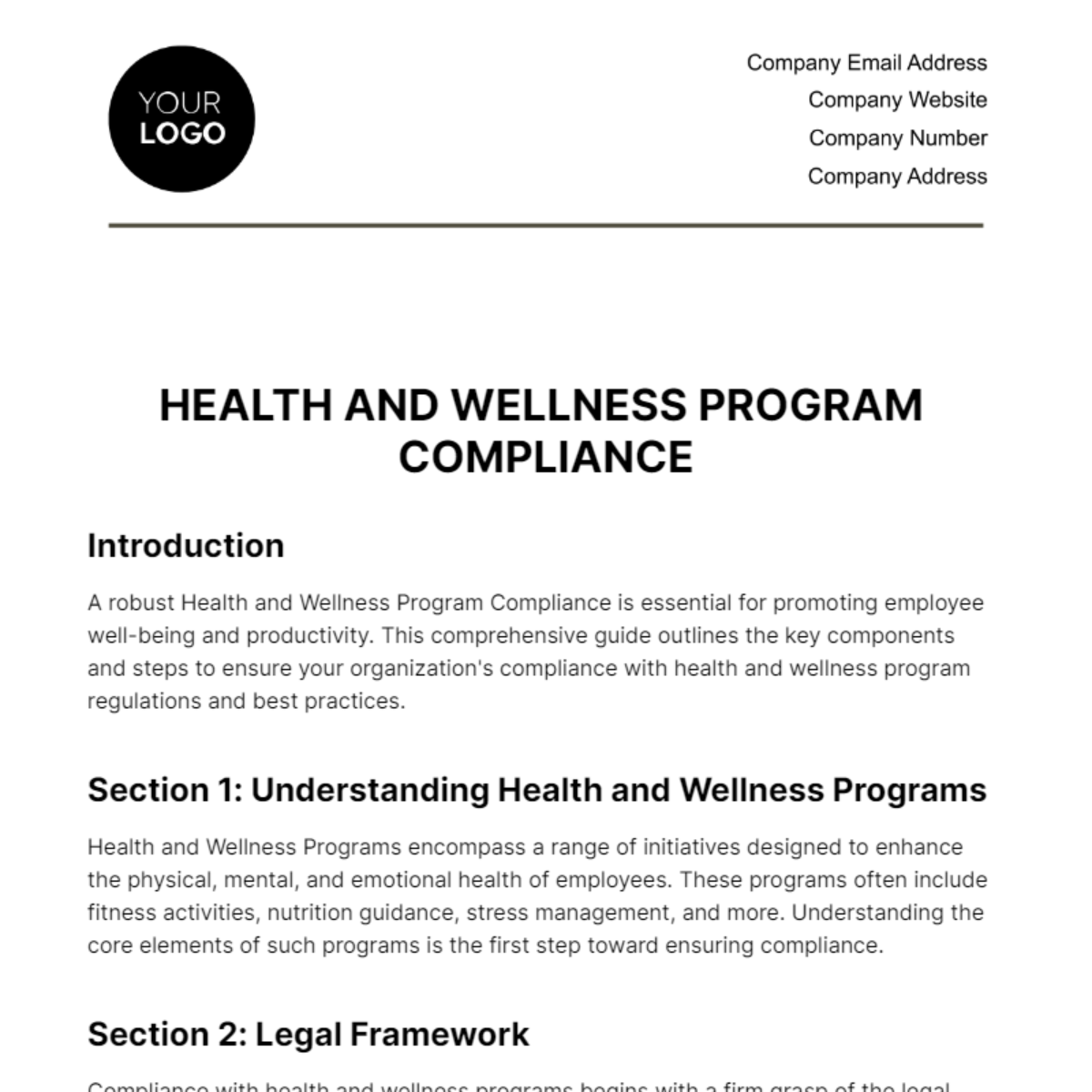HEALTH AND WELLNESS PROGRAM COMPLIANCE
Introduction
A robust Health and Wellness Program Compliance is essential for promoting employee well-being and productivity. This comprehensive guide outlines the key components and steps to ensure your organization's compliance with health and wellness program regulations and best practices.
Section 1: Understanding Health and Wellness Programs
Health and Wellness Programs encompass a range of initiatives designed to enhance the physical, mental, and emotional health of employees. These programs often include fitness activities, nutrition guidance, stress management, and more. Understanding the core elements of such programs is the first step toward ensuring compliance.
Section 2: Legal Framework
Compliance with health and wellness programs begins with a firm grasp of the legal framework. This section covers federal and state regulations, such as the Americans with Disabilities Act (ADA), the Health Insurance Portability and Accountability Act (HIPAA), and the Affordable Care Act (ACA). It also delves into Equal Employment Opportunity Commission (EEOC) guidelines.
Section 3: Designing a Comprehensive Program
A well-structured health and wellness program includes clear goals, employee engagement strategies, and measurable outcomes. This section outlines the steps involved in designing a program that aligns with the organization's objectives and ensures compliance with regulatory requirements.
Section 4: Data Privacy and Security
The collection and handling of employee health data require strict adherence to privacy laws. Here, we discuss best practices for safeguarding sensitive information, ensuring HIPAA compliance, and maintaining trust among employees.
Section 5: Inclusivity and Accessibility
Promoting inclusivity means making health and wellness programs accessible to all employees, regardless of their physical abilities or health conditions. We explore ways to accommodate diverse needs while adhering to ADA regulations.
Section 6: Communication and Education
Effective communication is key to program success. This section covers strategies for educating employees about the program's benefits, rights, and responsibilities, as well as promoting engagement and participation.
Section 7: Preventing Discrimination and Retaliation
This section addresses the importance of preventing discrimination and retaliation against employees who participate in health and wellness programs. It offers guidance on anti-discrimination policies, complaint procedures, and maintaining a respectful workplace culture.
Section 8: Incentives and Rewards
Many organizations use incentives to encourage employee participation in wellness programs. This section discusses permissible incentives under the ACA and EEOC guidelines, ensuring compliance while motivating employees.
Section 9: Monitoring and Evaluation
Regular monitoring and evaluation are crucial for gauging program effectiveness and compliance. We provide a step-by-step guide to tracking metrics, making necessary adjustments, and demonstrating program value to stakeholders.
Section 10: Documentation and Recordkeeping
Accurate documentation is essential for demonstrating program compliance in case of audits or legal inquiries. This section outlines what records to maintain, how to organize them, and how long to retain them.
Conclusion
A Health and Wellness Program Compliance document is a multifaceted endeavor requiring a deep understanding of regulations, thoughtful program design, and meticulous documentation. By following this guide, organizations can foster a healthier, more productive workforce while staying in line with legal requirements and ethical standards.
HR Templates @ Template.net






























